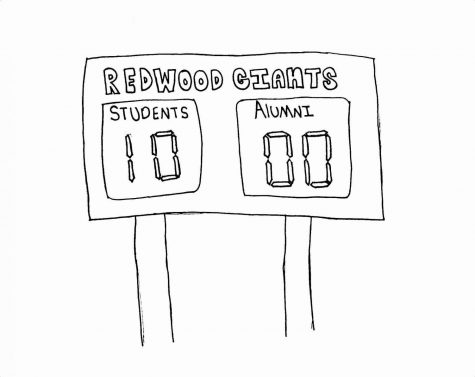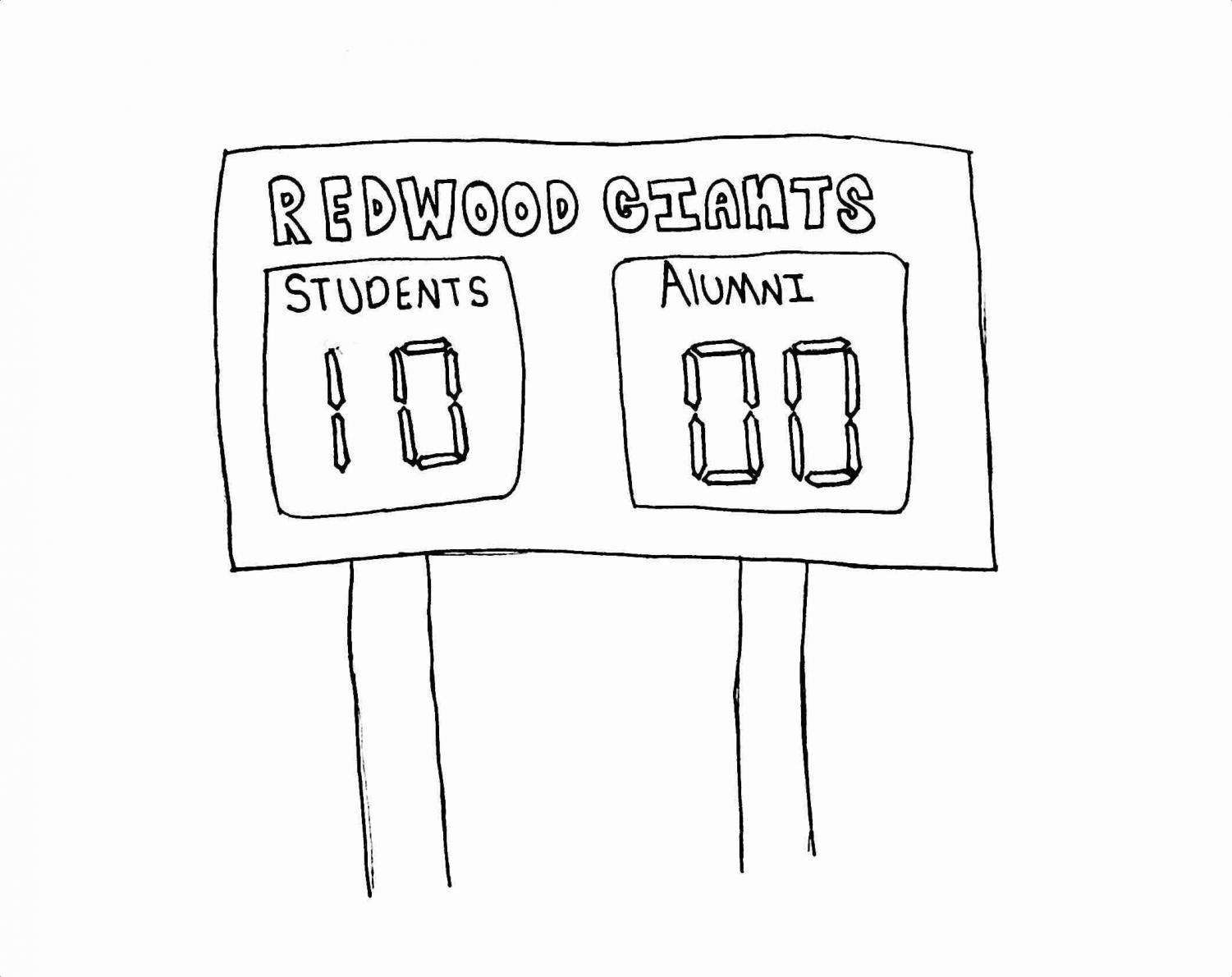When a Redwood student hears the word homecoming, they may define it as a time during the school year that recognizes outstanding students to participate in activities in an attempt to be a part of the homecoming royalty. Perhaps another student might define homecoming as an opportunity to attend a spirited football game, sit on bleachers to watch the rally or dress up in fancy outfits for a dance in the gym. No matter how a Redwood student defines homecoming, it is clear that over the years the celebration has meandered further away from the tradition of bringing alumni back and has become solely student-oriented. Homecoming celebrations should be more inclusive to the entire high school population and beyond, including alumni involvement, instead of just student activities.
Traditionally, homecoming exists in order to welcome back former students and members of high school or college, yet Redwood seems to define homecoming in a different way. The same student activities are run every year prior to the homecoming game and dance, yet the true meaning of homecoming is never practiced. Homecoming, especially for colleges and universities, is a time for students and alumni to socialize in a group setting.
The celebrations usually begin with the coming home of alumni to reminisce about their high school experiences. According to the Missouri Alumni Association, the University of Missouri hosted the first homecoming event that inspired this now annual event. Alumni were invited to come home for the annual game, which consisted of over 10,000 alumni and fans. The weekend of homecoming in Missouri consisted of alumni speeches to students, parades, rallies and dances for both students and alumni to attend. In the past, homecoming seemed to be a more unifying event whose true meaning was to integrate not only current students, but past students as well. It is important to recognize that homecoming celebrations in the past were not centered around crowning a king or queen, nor watching homecoming royalty participate in leadership-run activities; homecoming was a time to blend members of a community, and for alumni to bond and relate their experiences to current students.

According to Active.com, homecoming celebrations started as early as the 1930s. Celebrations were so inclusive that homecoming parades would run the length of a town’s main street, inviting the majority of the town’s citizens and businesses to take part. Local schools such as Novato and San Marin High School have carried on the tradition of parades that unify students and alumni, yet Redwood’s homecoming has zero ties to alumni and the community around us. This is unfortunate, because advice from our graduated peers could greatly benefit high-schoolers as they step into the future.
Homecoming in the past was not a high school tradition. It instead stemmed from various college campuses that believed it was important to integrate alumni. Although this is true, it is just as important for homecoming to bring together current high school students at the start of the year instead of just alumni. Redwood, for example, uses the homecoming rally to make students from various grade levels participate in games and skits that help the classes bond. If alumni were involved in activities that students participated in during homecoming, it may take away from the aspect of homecoming that focuses on the coming together of current students. In addition, integration of alumni might not be a valuable experience for some students because of the age gap and disconnection between current students and alumni. Allotting bonding time for current students is essential at the start of a new school year, however Redwood is disregarding the origins of homecoming and its main function: to make alumni feel at home again.
Throughout the year there are plenty of other opportunities for different classes to get to bond, but homecoming allows for a unique experience with community members outside of the school. Dances such as the BTSD, rallies and Link Crew events scattered throughout the year all attempt to make students get to know each other and socialize. In addition, there may be some awkwardness if alumni joined in on homecoming, but the majority of adults coming back to their former school would be curious about the lives of current students and may even discuss their common interests and career goals.
Restoring homecoming to its traditional purpose will allow graduated members of the community to reminisce on their former high school days and allow students and teachers to gain knowledge and perspective from past students.








